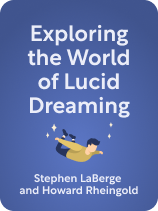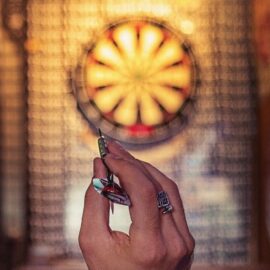

This article is an excerpt from the Shortform book guide to "Exploring the World of Lucid Dreaming" by Stephen LaBerge and Howard Rheingold. Shortform has the world's best summaries and analyses of books you should be reading.
Like this article? Sign up for a free trial here.
What does it mean to fall asleep consciously? What are the two techniques for conscious sleeping?
Normally, we’re not aware of the moment when we fall asleep. However, it’s possible to fall asleep consciously with practice.
Here’s how to sleep consciously so you can practice lucid dreaming.
Fall Asleep Consciously
One lucid dream method is to fall asleep without losing your lucidity from being awake. This way, you can transition directly into lucid dreaming instead of trying to become conscious after a dream has begun. Typically, we are not aware of the exact moment when we fall asleep, and we stay unaware that we’re sleeping until we wake up. The authors describe this method as feeling like you’re falling asleep without losing awareness of yourself.
Falling asleep consciously doesn’t work well at the beginning of the night because you must cycle through several stages of non-REM sleep before falling into REM. Therefore, these methods work best if you awake late at night or in the early hours of the morning and then go back to sleep.
| There’s No Hard Line Between Being Awake and Asleep Some sleep research supports the authors’ assertion that you can remain conscious while you transition into sleep. Sleep has long been considered a distinct state separate from wakefulness, but one insomnia study challenges this notion, suggesting that conscious awareness can happen while your brain activity is in sleep patterns. The researchers of the study explain that when you fall asleep, your brain sends inhibitory signals to neurons to reduce your conscious awareness, aiding in the transition to deep sleep. Normal sleepers lose consciousness before their brain is in a sleep pattern. In contrast, people with insomnia may not experience this transition as smoothly. The abnormal transition may cause them to feel awake even when their brains show sleep pattern activity, leading them to sense that they haven’t fallen asleep even when they have. |
Practice the following techniques for how to sleep consciously and slip directly into lucid dreaming.
Technique #1: Pay attention to images
- Relax completely by breathing slowly, progressively loosening up each part of your body, and letting your concerns fade away.
- With your eyes closed, focus on the images that appear in your mind’s eye—what science calls hypnagogic imagery. Often, these are shifting colors and images and flashes of light. Watch them calmly, without trying to control them.
- Observe as these images get more vivid and form into a dream. Attempt to stay aware of the images and yourself, and let yourself be drawn passively into the dream, fully lucid.
| The Hypnagogic State: From Perceptions to Hallucinations Not everyone experiences hypnagogic images while falling asleep. Studies suggest that hypnagogic perceptions, including images, sounds, and physical sensations, are common but not universal, occurring in about 70% of the general population. Research also suggests that hypnagogic perceptions are more vivid than typical dreams, and they can sometimes cross over into hypnagogic hallucinations, in which you perceive realistic objects or events before you fall asleep. Experts say hypnagogic hallucinations can be distressing and confusing, such as hearing voices or feeling bugs crawling on your body. They also explain that these hallucinations differ from lucid dreams and sleep paralysis, although these experiences can occur simultaneously. |
Technique #2: Count yourself into a dream
- Relax completely, as described in step 1 of technique #1.
- Count to yourself, saying, “One, I am dreaming…Two, I am dreaming,” and so on.
- Eventually, you’ll find that you are saying, “I am dreaming” inside a dream and consequently become lucid.
(Shortform note: While this technique assumes a smooth transition from being awake to entering into the dream world, many sleep and dream researchers point out that the process is not always this linear. You might experience stages of semi-consciousness or hypnagogic states, as discussed above, where you could easily lose track of your counting.)

———End of Preview———
Like what you just read? Read the rest of the world's best book summary and analysis of Stephen LaBerge and Howard Rheingold's "Exploring the World of Lucid Dreaming" at Shortform.
Here's what you'll find in our full Exploring the World of Lucid Dreaming summary:
- Ways to prepare for lucid dreaming
- How to purposefully “wake up” in your dreams
- The many ways lucid dreaming can improve your waking life






